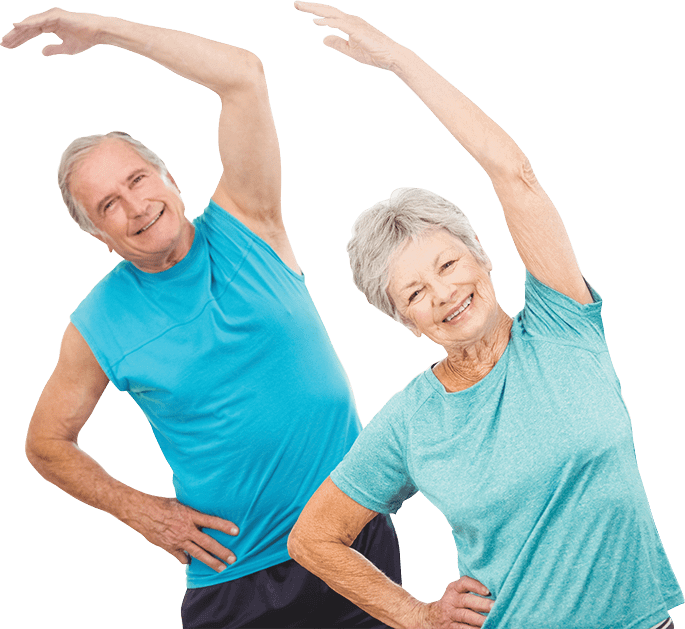Rehabilitation - Transfer Training
Introduction
In rehabilitation, “transfer training” refers to alternate methods of moving your body from one surface to another. We move and reposition our bodies several times daily, for instance when we get on and off a chair, in and out of the shower, or in and out of our cars. Safe transfer methods are necessary for independent living and the prevention of falls and injuries. People with impaired mobility can learn new ways of transferring their bodies to live as independently and safely as possible.
It may be necessary to learn transfers if you have experienced a condition that affects your strength, endurance, mobility, balance, or coordination. Many medical conditions can cause a change in physical functioning including neurological disorders, such as a stroke, spinal cord injury, or traumatic brain injury; neurological diseases, such as Parkinson’s Disease or Multiple Sclerosis; and orthopedic conditions, such as lower extremity injury and surgery. Physical impairments may be temporary or permanent, or partial or complete.
Treatment
Your doctor can write you a prescription for rehabilitation and transfer training with an occupational therapist and/or a physical therapist. The type of transfers that you learn depend on your physical strengths and weaknesses. If you use a wheelchair or walking device, your equipment will be incorporated into your transfer method. You will learn transfers to and from surfaces used in every day living, such as toilet transfers. You can also learn car transfers and other types of transfers to meet your lifestyle. Be sure and tell your therapists your preferences and goals. Your loved ones and caregivers are welcome at your sessions so that they can be trained to assist you, if necessary.
If you are unable to move at all, you and your loved ones and caregivers will be trained to operate mechanical lift equipment. There are a variety of lifts to choose from. Your therapists can help you select the equipment that is best suited for you and your home.
If you are not able to put weight on your legs, you may use your arms and upper body to transfer from a wheelchair to another surface, such as a toilet. If your upper body is strong, you may use a depression transfer, which means that you depress your scapulas to raise your body up and lower it in a new position. If your upper body is weak, a sliding board placed under your buttocks can bridge the gap between the surfaces you are transferring to and from. Some people may need the help of another person for balance and strength. Your therapists will train other people to safely help you. This is called “assisted transferring.”
If you are able to place some weight on both of your legs or one leg, you will be trained to do pivot transfers. Pivot transfers require that you place some degree of weight on one or both legs and turn your body from one surface to another. You may do stand pivot transfers or sit pivot transfers, depending on your ability to straighten your back and legs. Assisted transfers can provide you with extra movement and balance.
Your therapists can perform a home evaluation to make transferring easier in your home. Thety can help you identify durable medical equipment that is appropriate for you and your home to help you transfer. It is easier to transfer to and from surfaces of equal height. Recommendations may include installing grab bars in a shower, using a raised toilet seat, or raising the height of a favorite chair. As your abilities improve, your therapists can teach you transfer methods to match your new skill levels.

Copyright © - iHealthSpot Interactive - www.iHealthSpot.com
This information is intended for educational and informational purposes only. It should not be used in place of an individual consultation or examination or replace the advice of your health care professional and should not be relied upon to determine diagnosis or course of treatment.
The iHealthSpot patient education library was written collaboratively by the iHealthSpot editorial team which includes Senior Medical Authors Dr. Mary Car-Blanchard, OTD/OTR/L and Valerie K. Clark, and the following editorial advisors: Steve Meadows, MD, Ernie F. Soto, DDS, Ronald J. Glatzer, MD, Jonathan Rosenberg, MD, Christopher M. Nolte, MD, David Applebaum, MD, Jonathan M. Tarrash, MD, and Paula Soto, RN/BSN. This content complies with the HONcode standard for trustworthy health information. The library commenced development on September 1, 2005 with the latest update/addition on February 16, 2022. For information on iHealthSpot’s other services including medical website design, visit www.iHealthSpot.com.



